Check out the alphabetical list of dinosaur names beginning with the letter “X”. We’ll look at dinosaur pictures and discuss what their names mean, as well as learn more about dinosaur facts.
Dinosaurs with names that begin with the letter “X”
Xenoposeidon
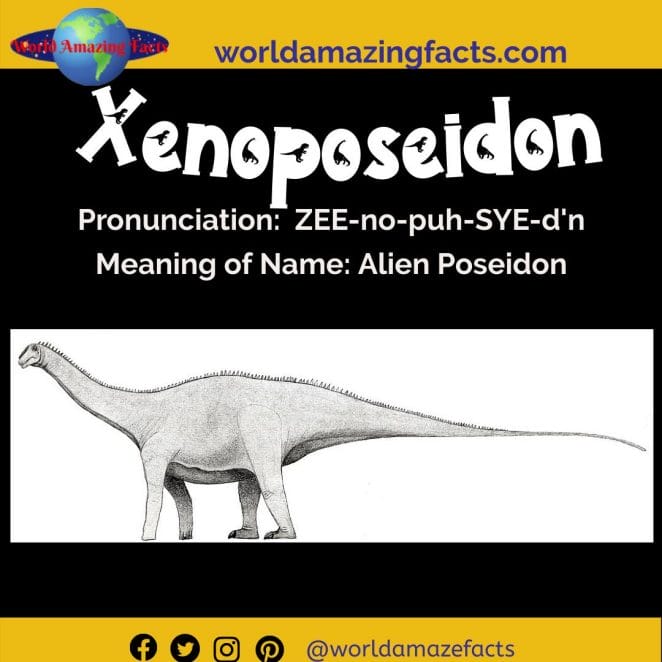
Xenoposeidon is a mystery neozauropoda (most likely a rebbachisauride) known only from one completed circle found in Early Cretaceous strata in southern England.
Xenoposeidon is Greek for “unknown / alien Poseidon” (the name of a Greek god appears in reference to another sauropod – Sauroposeidon ). The genre epithet alludes to the vertebral arch structure and denotes “forward inclining” (from Latin pronus ).
Xenotarsosaurus

The Late Cretaceous Abelisauroid Xenotarsosaurus lived in the present-day Argentine region of Chubut.
The name Xenotarsosaurus is derived from Greek and means “strange-walked lizard” (xenos means “strange,” tarsos means “walk,” and sauros means “lizard”) and refers to the odd structure of the foot bones. The genre name bonapartei was inspired by Argentine palaeontologist Jose Bonaparte.
Xianshanosaurus

The long-necked dinosaur Xianshanosaurus was discovered in eastern China.
The generic name is a combination of Xianshan (Mount Xian), where the holotype was discovered, and the Greek sauros (lizard, lizard). As a result, the name can be interpreted as “Xian lizard.” The genre epithet, in turn, relates to the town of Shijiagou, where the holotype was discovered.
Xiaosaurus
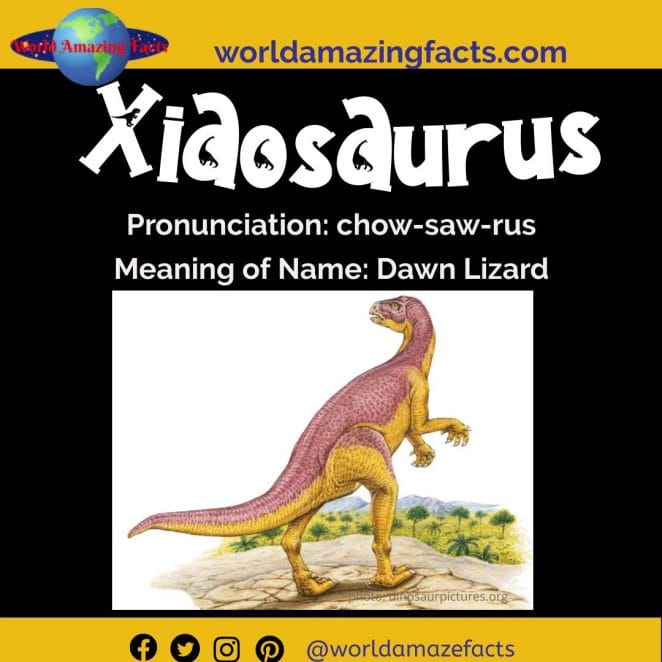
Xiaosaurus is a tiny, bird-flock dinosaur that lived in what is now China during the Middle Jurassic period. Xiaosaurus is known from a tiny number of bones, however it is hypothesised that Xiaosaurus was a small, two-legged herbivore with a small head and long hind limbs, possibly supplementing its vegetarian diet with small mammals.
Xiaosaurus is derived from the Chinese word xiao, which means “dawn,” and the Greek word sauros (“reptile”, “lizard”). The species name relates to the region where the bones were discovered, Dashanpu.
Xiaotingia

Xiaotingia is a tiny theropod belonging to the Paraves group. Xiaotingia lived in what is now China during the late Jurassic period. It is extremely important for the study of the origins of birds.
The name Xiaotingia zhengi honours the Chinese palaeontologist Zheng Xiaoting, who donated to the Shandong Tianyu Museum of Nature, which has the holotype of this species.
Xingtianosaurus
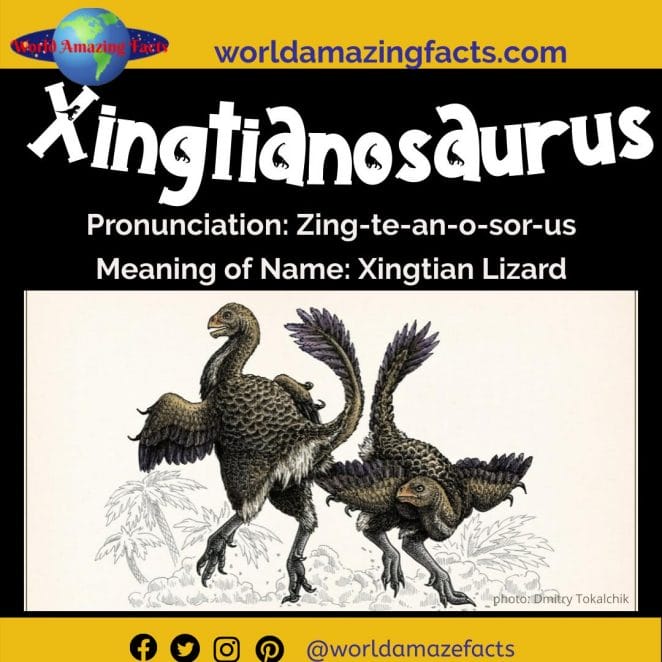
Xingtianosaurus was a theropod of the Oviraptorosauria group that lived in today’s China during the early Cretaceous epoch. Rui Qiu and colleagues named Xingtianosaurus in 2019.
The name Xingtianosaurus is derived from Xingtian, a Chinese deity who resumed the fight after cutting off the head (a reference to the dinosaur’s headless holotype), and the Latin word sauros (“reptile”, “lizard”). The genre epithet ganqi refers to this Xingtan’s weapon.
Xingxiulong

Xingxiulong is the ancestor of medium-sized sauropodomorphs. Xingxiulong were discovered in the Lufeng Formation in southern China (Yunnan Province). Xingxiulong is thought to be the representative of the Sauropodomorpha clade Massopoda.
The generic name Xingxiulong means “the dragon of Xingxiu” and refers to the Xingxiu Bridge in Lufeng County, which was built during the Ming Dynasty (1368-1644). The genre epithet chengi honours Professor Zhengwu Cheng (1931-2015), who spent his life researching biostratigraphy in Lufeng.
Xinjiangovenator
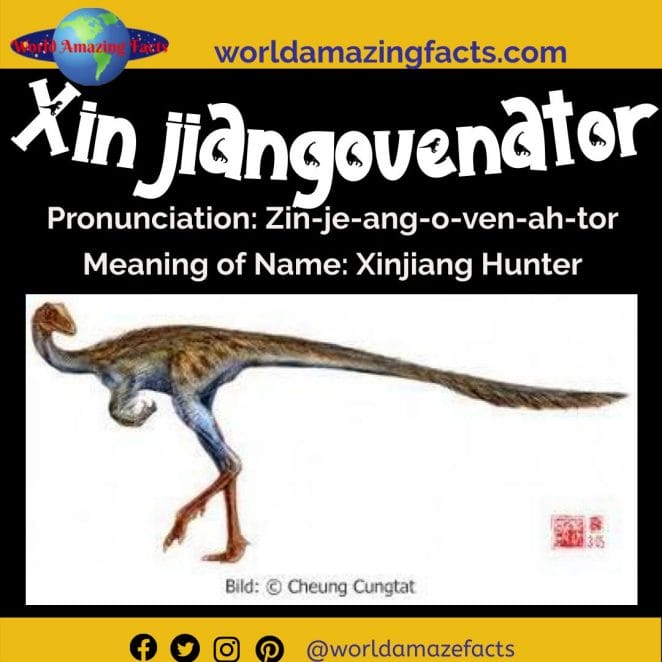
Xinjiangovenator is a strange celurosaur that lived in present-day China during the early Cretaceous period.
The name Xinjiangovenator means “the hunter of Xinjiang,” and the genre epithet relates to the animal’s diminutive stature, because paravus means “as much as small” in Latin.
Xinjiangtitan
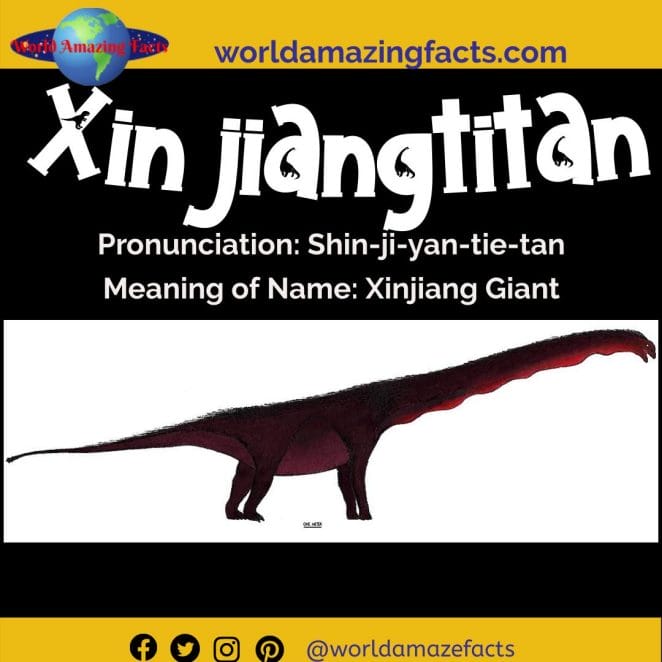
Xinjiangtitan shanshanesis is a Middle Jurassic sauropod closely related to Mamenchizaurus, which has also been discovered in China.
The name Xinjiangtitan is derived from the Xinjiang Autonomous Region and Shanshan County where it was discovered, as well as Greek, titan, giant in Greek mythology, and a commonly used name for sauropods.
Xiongguanlong

Xiongguanlong is a medium-sized tyrannosauroid that lived in what is now China during the end of the Early Cretaceous epoch. Li and his colleagues described it in 2010.
The generic name is derived from a combination of two words: Mandarin Xiong Guan (Grand Pass), the historical name of Jiayuguan, and Chinese long, which means dragon. The genre name is derived from the Mandarin bai mo (white spirit), which is referenced in the area’s topography.
Xixianykus
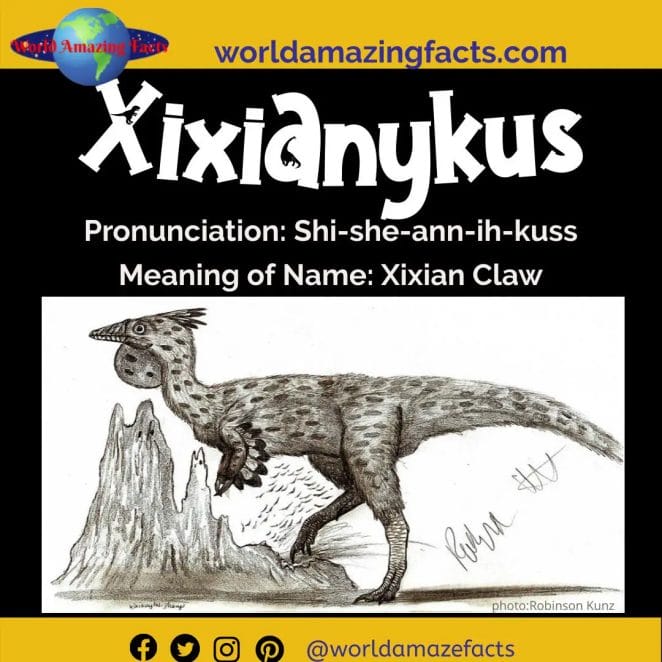
Xixianykus is a genus of small theropods from the Alvarezsauridae family that lived in today’s China during the late Cretaceous period.
The term Xixianykus is derived from the Xixia district and the Greek word onyx (“claw”). The genre name pays homage to Chinese palaeontologist Zhang Wentang.
Xixiasaurus
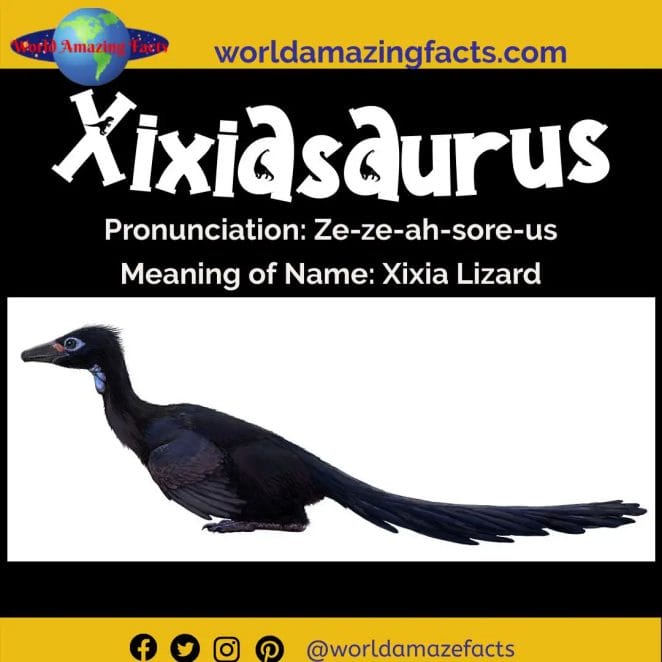
Xixiasaurus is a tiny theropod from the Troodontid family discovered in what is now China during the Late Cretaceous period. Byronosaurus from Mongolia appears to be Xixiasaurus’ closest relative in form and size. A team of palaeontologists led by Junchang Lü named and characterised Xixiasaurus in 2010.
The name Xixiasaurus is derived from the Xixia area in China, and the species epithet is derived from Henan Province.
Xixiposaurus
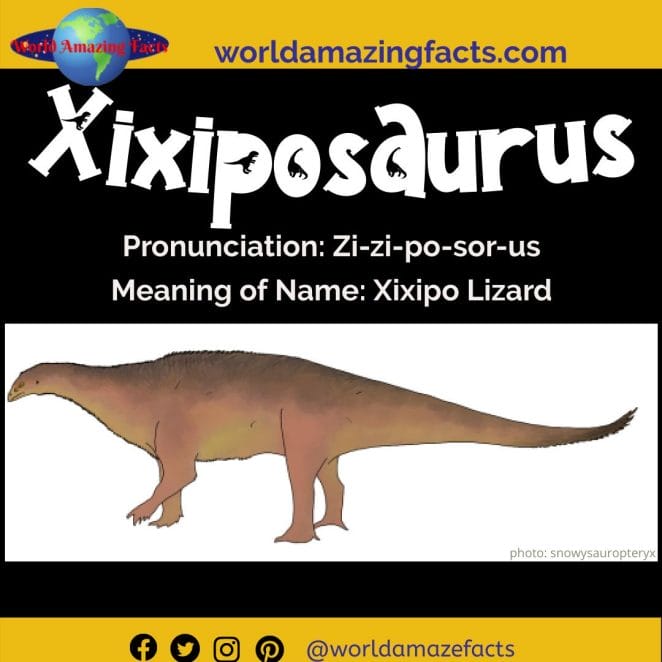
Xixiposaurus is a sauropodomorph that lived in present-day China (Yunnan Province) during the Early Jurassic period. Toru Sekiya, a Japanese palaeontologist, described Xixiposaurus in 2010. According to his phylogenetic study, Xixiposaurus is a sister taxon to Mussaurus and China’s most sophisticated “prosauropod.”
Xixiposaurus is a combination of the terms Xixipo, the name of a small hamlet in Lufeng County, and the Greek sauros (lizard). As a result, it can be interpreted as “Xixipo lizard.” Suni refers to the Chinese academic Sun Ge of Jilin University.
Xiyunykus
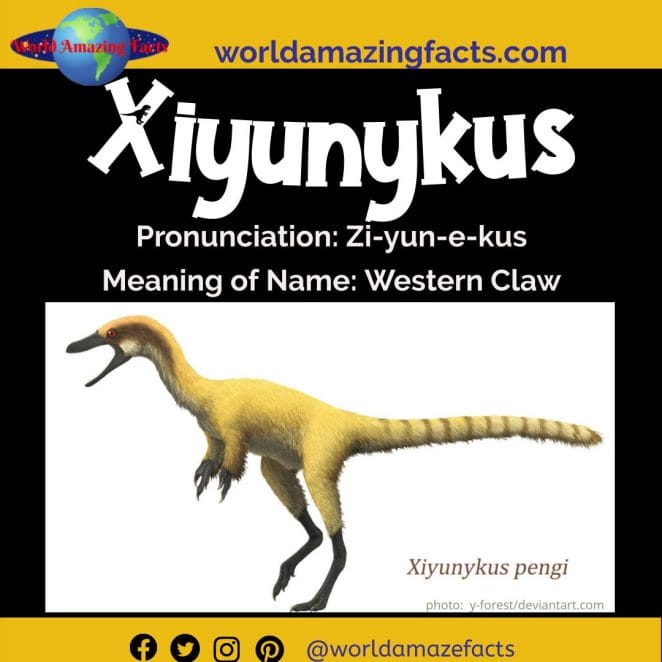
Xiyunykus is a tiny theropod of the Alvarezsauroidea group whose fossils were unearthed in modern-day China. The finding of Xiyunykus, together with Bannykus revealed in the same scientific journal, allowed scientists to complete a 70-million-year-old gap in theropod fossil record.
The name Xiyunykus is derived from the Mandarin word Xiyu, which means “western region,” and the Greek word onyx (“claw”). The pengi species name recognises Professor Peng Xiling for his contributions to Xinjiang geology.
Xuanhanosaurus

Xuanhanosaurus is a medium-sized Mid-Jurassic theropod that lived in what is now China. Only one partial specimen of Xuanhanosaurus is known. Xuanhanosaurus’ exact evolutionary position is unknown, as it is for other poorly understood Chinese theropods. Dong identified and characterised Xuanhanosaurus in 1984.
The name Xuanhanosaurus is derived from the Xuanhan County in Sichuan Province, where the animal’s remains were discovered, and the Greek word sauros, which means “lizard.” The genre name alludes to the city of Qilixia.
Xuanhuaceratops
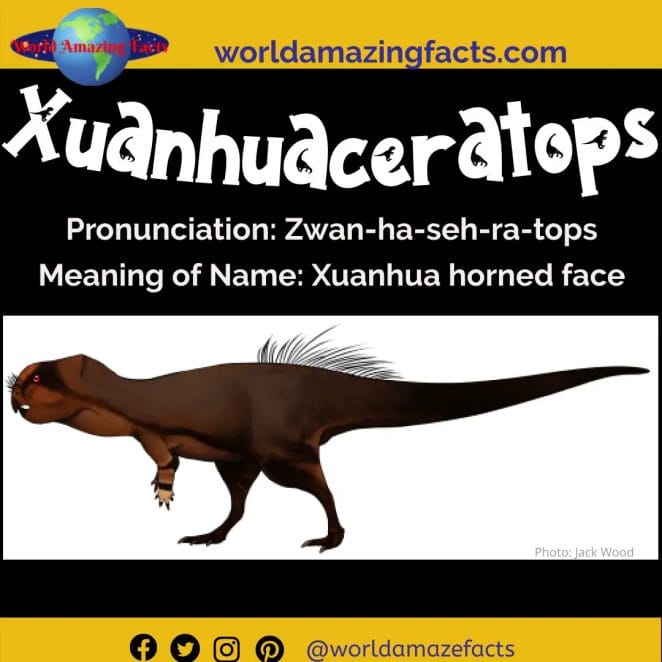
Xuanhuaceratops is a basal ceratops that lived in what is now China during the Late Jurassic Period.
Zhao named Xuanhuaceratops as “Xuanhuasaurus niei” in 1985. ( nomen nudum ). Zhao et al. formally named it Xuanhuaceratops niei in 2006. The generic name is formed from the terms “Xuanhua” (the location of the fossils) and “ceratops.” The species was named after Nieg Rongzhen, who gave the authors the name Xuanhuaceratops fossil.
Xunmenglong
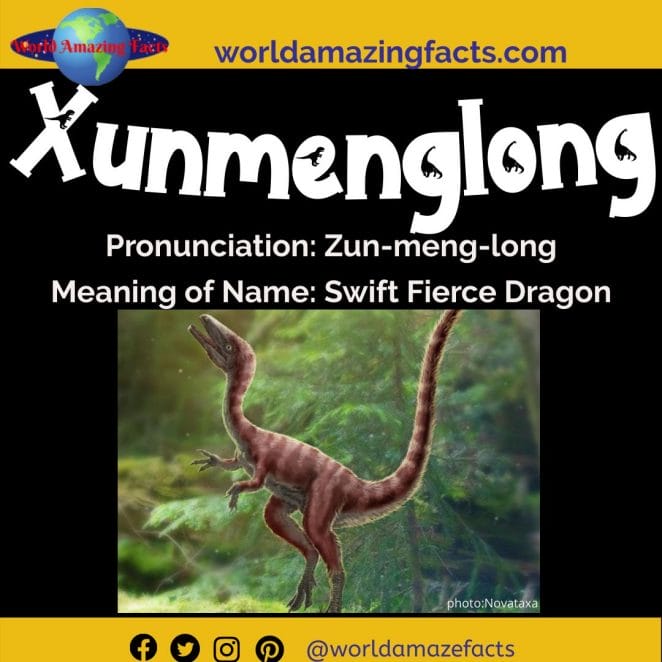
Xunmenglong is a tiny theropod of the Compsognathidae family that lived in present-day China during the Early Cretaceous epoch.
A team of scientists led by Lida Xing named it in 2019. It is most likely the tiniest known compsognatide. Xunmenglong is derived from the Chinese terms xunmeng and long and meaning “swift dragon.”
Xuwulong
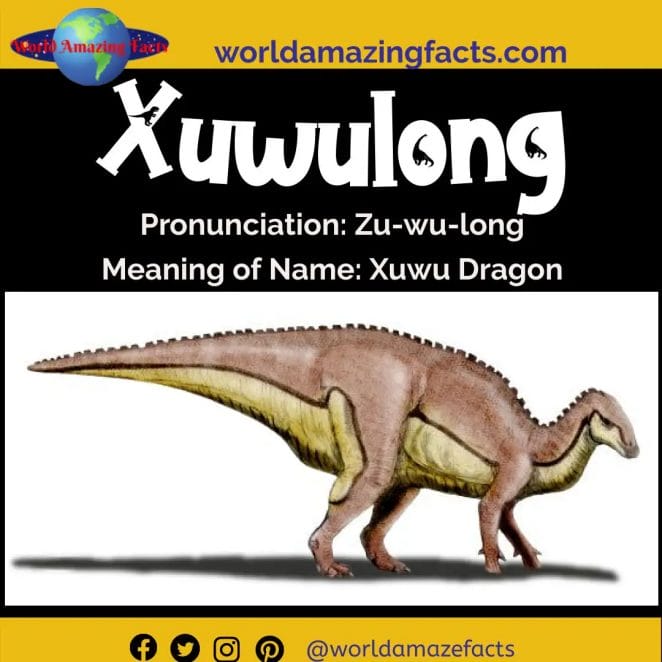
Xuwulong was a medium-sized ornithopod that was around 5 metres in length. Xuwulong, like all ornithopods, was a herbivore. Perhaps it coexisted with the neoceratops Archaeoceratops, the ornithopod Jintasaurus, and the tyrannosauroid Xiongguanlong.
The generic name Xuwulong is a combination of professor Wang Yue-Chinese lun’s name Xu-wu (in Chinese custom, younger citizens devised nicknames for elderly) and the Chinese long term meaning “dragon.” The species name yueluni also honours this Chinese geologist who lived from 1903 to 1981.
Read also: A-Z list of Dinosaur Names and Pictures





GIPHY App Key not set. Please check settings